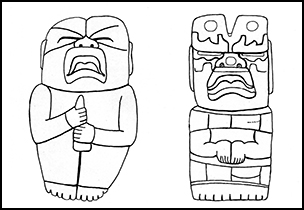No CrossRef data available.
Article contents
The Aberdeen Celt: an early twentieth-century Olmec find
Published online by Cambridge University Press: 10 April 2019
Abstract

The distinctive character of Olmec art and culture within the wider Mesoamerican tradition was only fully recognised in the twentieth century. The authenticity and significance of several aspects of Olmec workmanship and imagery, however, remain the subject of debate. Here, the authors report on an incised stone celt (axe) from southern Mexico, which bears imagery relating it to the Middle Preclassic Olmec of the earlier first millennium BC. The image is interpreted as a Mesoamerican maize deity grasping a corn ear fetish. Originally discovered in 1910, its early date makes the object valuable for confirming debated aspects of Olmec art and culture.
Keywords
- Type
- Research
- Information
- Copyright
- Copyright © Antiquity Publications Ltd, 2019




